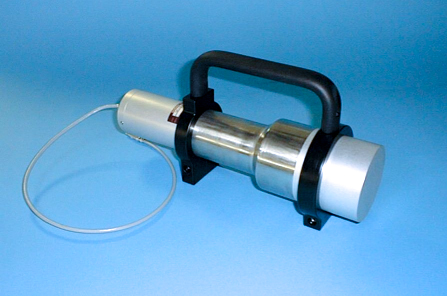February 23rd, 2022 - Ruggedized Detectors: Customized Scintillators in the Field
One of the most key metrics for a customized scintillator is whether the detector is intended for lab or fieldwork. Configurations for lab work can be damaged if exposed to high degrees of impact, vibrations, or temperatures. Usually, these conditions will never occur due to the stabilized environment–but in the field, such a system would be at risk of incidents such as the crystal fracturing, dislodging, or suffering temperature damage.

Fortunately, it is possible to take steps to reduce the fragility of detectors intended for the field.
1). Shock Absorption and Temperature Protection
Firstly, it is key that the internals of the detector remain unharmed in two common fieldwork scenarios: high impact occurrences, and sudden temperature transitions. By using special packing materials around the scintillator crystal and the PMT, it is possible to drastically reduce the all-around damage caused by these scenarios. The tradeoff is that this limits the potential diameter and height of the housed crystal due to the need for spare room for the packaging.
2). Dust and Water Protection
Beyond forces as mentioned above, it is also important that stray particles do not breach the assembly and affect the electronics within the device. When set out to be ruggedized, customized scintillators from BNC naturally achieve what is known a IP54: this means that, in terms of ingress protection, the unit is not sealed totally against dust, but that dust will not affect the unit; as well, the device is resistant against low pressure sprays (drizzling rain, or mist kicked up while on a boat). By request, detectors can achieve a rating instead of IP68–completing protection against dust and occasional immersions in water.
3). Ergonomics
While more on the side of convenience, ergonomic features for detectors, such as handles, can reduce fatigue and decrease the likelihood of mishandling the unit. It is possible to specify in requests to BNC that a detector should come with such a handle, which will be installed securely onto the aluminum housing of the unit.
4). Readout
A standalone MCA unit, used to read out and analyze data from the scintillator, can become unwieldy if taken out into the field. BNC’s bMCA plugs directly onto a scintillation detector’s 14-pin termination, meaning that the detector and readout are one cohesive unit that only then needs to be connected to a laptop or transportable device for analysis.
While taking a detector out into the field poses challenges for standard configurations, it is more than possible to address these issues! Please check out this section on detector nomenclature and type numbering for additional customization options.
Inquiries can be addressed to info@berkeleynucleonics.com or done through the get a quote form.
